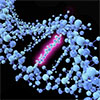| Jan 20, 2022 |
|
|
|
(Nanowerk News) Sometimes the smallest action can have unintended consequences, like the proverbial flap of a butterfly’s wings. So, when making small changes, it’s important to be alert to large effects, such as when using gene editing technology to create new mutations.
|
|
In a study published in PLOS Biology (“DAJIN enables multiplex genotyping to simultaneously validate intended and unintended target genome editing outcomes”), researchers from the University of Tsukuba report the development of a software program called Determine Allele mutations and Judge Intended genotype by Nanopore sequencer (DAJIN). This program identifies both intended and unintended mutations caused by a genomic modification strategy.
|
|
Genomic mutation is a powerful technique used by scientists to design and carry out specific biological experiments or to modify organisms such as crops or livestock. A number of different mutation techniques are commonly used and usually produce the intended effect; but they can also cause other, undesirable, mutations.
|
|
“It is very important to detect unintended mutations that may have unexpected consequences, interfere with the effects of the intended mutation, or even be harmful,” explains Professor Seiya Mizuno, senior author of the study. “However, none of the tools that are currently available for this purpose can reliably identify all of the many kinds of unintended mutations that can occur.”
|
|
To address this, the researchers designed a software program that integrates a variety of different approaches to detect a range of off-target effects, from point mutations near the intended mutation site to large deletions far away. Then they tested their new program in various contexts to see how well it performed.
|
|
“The results clearly showed that DAJIN detected both intended and unintended mutations in plasmid vectors and in experimental animals,” states Professor Mizuno. “Furthermore, by using a deep neural network model—a type of machine learning—it accurately classified and grouped the mutations according to type, whether it was a single nucleotide change or a large rearrangement.”
|
|
Importantly, DAJIN was able to accurately identify and classify the majority of mutations, even in a mixed pool of many possible mutations. This sets DAJIN apart from current techniques, which are generally only able to assess one, or at most two, different gene arrangements (known as alleles).
|
|
“Our findings suggest that DAJIN can be practically and reliably applied to the routine assessment of gene editing outcomes,” says Professor Mizuno. “Moreover, it can screen in the region of 100 samples at once, making it an efficient and convenient tool.”
|
|
Given that DAJIN is able to identify multiple genomic changes regardless of the species or type of material, it is likely to be extremely useful in screening edited cell culture pools generated in lab-based experiments. In addition, it could have important uses in industry—for example, for quickly identifying correctly modified experimental or farm animals.
|
